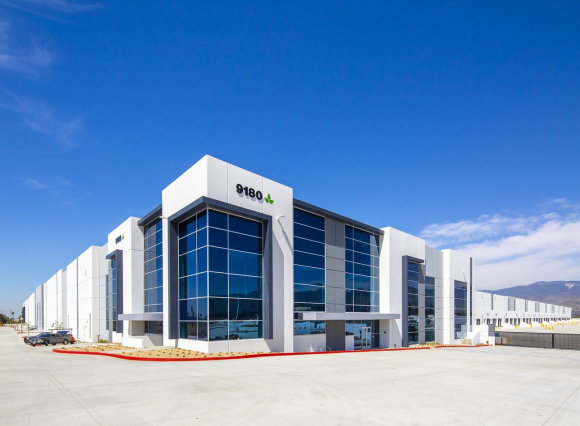Securing modern logistics real estate is like mining for gold in the Golden State — hard to find and very valuable. Driven by accelerated e-commerce growth and expanded restock inventory needs, companies are desperate for modern warehouse and distribution space. Extremely tight supply with a challenging entitlement process for creating new logistics space coupled with supply chain bottlenecks hampered by port congestions and shipping container, rail car and trucking shortages are driving rent increases and shipping chokeholds. Warehouses are at capacity and companies need more modern, conveniently-located facilities to meet consumer needs. How can this perfect storm be calmed?
Efficiency
According to recent Cushman & Wakefield research, demand for industrial real estate continues to outpace supply, with U.S. vacancy rates hitting a record low of 4.5 percent in the second quarter of this year. Land shortages, added building requirements, increased costs and permitting difficulties are some of the reasons supplies remain tight and rents continue to rise. Additionally, industrial-zoned land in densely populated areas is in short supply. So, it’s time to make it easier to develop new space.
Right now, entitlement processes vary by jurisdiction — procedures, wait times and requirements are inconsistent across the state. By communicating ahead of a development, developers, local government leaders and residents can all work together to ensure the economic and environmental impacts are considered and the needs of cities and communities are understood up front. Developers can then implement mitigation measures during project design to streamline potential snags during the entitlement process, avoiding costly delays and getting product to the market more efficiently.
Pipeline of Availability
During this storm, it pays to have an established footprint of in-service offerings. While the facilities may be fully leased now, there is a pipeline of potential space in the future. As companies look for industrial space weeks, months, even years, in advance of anticipated future growth, an established portfolio allows for more flexibility of offerings and timing of availability. A build-to-suit facility could take two years or more to deliver, but having a robust portfolio provides for space that may only need upgrades and can be ready in a matter of months or weeks.
Also, having land banked for future facilities is now more valuable than ever. When there is opportunity for land, it’s important to react quickly with due diligence and funding. We are finding that what we start as a speculative development, is more often than not pre-leased and coverts to a spec-to-suit project. In fact, Duke Realty has leased ten out of our last 12 speculative developments in Southern California prior to, or immediately after, being placed in service. Thanks to thoughtful land acquisitions we were able to start two developments last quarter in Southern California totaling 372,000 square feet. Today’s competitive market requires strong funding from an established, robust portfolio in order to make strategic acquisitions and maintain a pipeline of projects.
Flexibility and Sustainability
According to JLL’s first survey on Global Logistics Real Estate, e-commerce accounted for 16 percent of 2020 total logistics and industrial leasing in the United States. The research also revealed continued strong growth for warehouse facilities, driven by demand for express and parcel delivery, third-party logistics services, healthcare and life sciences, and construction and materials. This means that facilities must be developed with use flexibility in mind.
In that same JLL survey, more than 70 percent of respondents said improving energy efficiency is the highest global priority, making sustainability in the development of logistics real estate of utmost importance. By incorporating modern workflow comforts, state-of-the-art technology and energy efficient features, facilities become agile environments that can be easily updated for changing tenant needs — appealing to corporate users who expect these features in the real estate that they occupy.
A facility that can easily transition to accommodate either manufacturing, warehousing, fulfillment and/or logistics needs in a sustainable, energy-efficient manner will give you the edge in this time of unprecedented demand.
Calming the storm of logistics real estate demand requires a more consistent and efficient planning and entitlement process for development, strong funding sources to react quickly to land and facility acquisition opportunities and the development of modern, sustainable facilities that are attractive to a variety of tenants.
Nancy Shultz, Duke Realty regional senior vice president. Email: [email protected]


